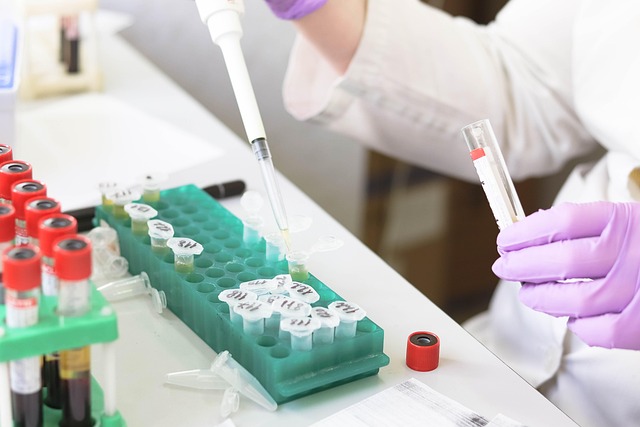Ferritin levels in blood serve as a critical diagnostic marker for iron deficiency, a common nutritional disorder in the UK. When combined with a testosterone blood test UK, these tests provide a comprehensive assessment. Healthcare providers use ferritin data, alongside other blood panels, to diagnose and manage iron deficiency anemia. Low ferritin levels (<12 ng/mL) signal insufficient iron intake or absorption, prompting tailored treatment recommendations like dietary changes, supplements, or parenteral iron therapy.
“Unraveling the Mystery of Iron Deficiency: A Deep Dive into Ferritin Level Testing
Diagnosing iron deficiency goes beyond surface symptoms. Enter ferritin level testing, a crucial tool in identifying this often overlooked health issue. This comprehensive guide explores the role of ferritin in iron deficiency diagnosis and the process of a ferritin blood test in the UK.
From understanding ferritin’s function to interpreting test results, we demystify each step, empowering you with knowledge about this essential hormone, especially when considering a testosterone blood test UK.”
- Understanding Ferritin and Its Role in Iron Deficiency Diagnosis
- How Ferritin Level Testing Works for Iron Deficiency
- Interpreting Results and Next Steps After a Ferritin Blood Test in the UK
Understanding Ferritin and Its Role in Iron Deficiency Diagnosis
Ferritin, a protein that stores and regulates iron in our bodies, plays a pivotal role in diagnosing iron deficiency. Often referred to as a marker for iron status, ferritin levels in the blood can provide valuable insights into an individual’s overall iron reserves. A testosterone blood test UK may occasionally accompany this assessment, as hormonal imbalances can influence ferritin production and thus impact diagnostic accuracy.
When iron levels in the body dip below normal ranges, ferritin levels typically reflect this deficiency. Healthcare professionals often order a ferritin level test alongside other relevant blood panels to confirm or rule out iron deficiency anaemia. Understanding these results is crucial for effective management of nutritional deficiencies, ensuring optimal health and well-being.
How Ferritin Level Testing Works for Iron Deficiency
Ferritin level testing is a crucial method for diagnosing Iron Deficiency, a common nutritional disorder. This process involves measuring the amount of ferritin, a protein that stores and releases iron in the body, in the blood. Ferritin acts as a sort of ‘iron reserve’, and its levels can provide valuable insights into an individual’s iron status. In the UK, a testosterone blood test is often not the primary indicator for Iron Deficiency; instead, healthcare professionals rely on ferritin testing to assess potential deficiencies.
The procedure typically entails drawing a small sample of blood, which is then analysed in a laboratory. Normal ferritin levels vary based on age and gender, but generally, elevated or low ferritin values can indicate an iron imbalance. If ferritin levels are consistently low, it suggests that the body may not have enough iron, leading to Iron Deficiency Anaemia. This simple yet effective test helps healthcare providers in the UK make accurate diagnoses and recommend appropriate treatment options for patients exhibiting symptoms of iron deficiency.
Interpreting Results and Next Steps After a Ferritin Blood Test in the UK
After a ferritin blood test in the UK, interpreting the results is crucial for diagnosing iron deficiency. Ferritin acts as a storage form of iron in the body; low levels can indicate insufficient iron intake or absorption, suggesting potential iron deficiency. According to UK guidelines, a ferritin level below 12 ng/mL (nanograms per millilitre) in adults consistently signals iron deficiency and may prompt further investigations, including a testosterone blood test UK, if relevant.
If your results fall within this range, the next steps involve consulting a healthcare professional. They will consider other symptoms, medical history, and potential causes before confirming a diagnosis. Treatment options can include dietary changes, iron supplements, or, in severe cases, parenteral iron therapy. Regular follow-up tests may be recommended to monitor ferritin levels and assess treatment effectiveness.
Ferritin level testing plays a vital role in diagnosing iron deficiency, offering a straightforward blood test that provides crucial insights. By understanding ferritin and interpreting results accurately, healthcare professionals in the UK can effectively navigate this common nutritional disorder. Just as a testosterone blood test UK helps assess male health, ferritin testing ensures appropriate iron levels, guiding necessary treatments and improvements in diet or lifestyle to enhance overall well-being.
